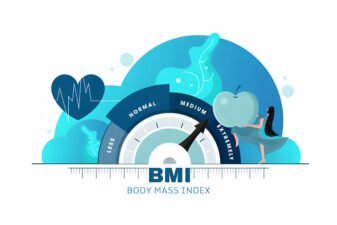Treatment for obesity includes a range of therapies, such as diet and exercise, behavior therapy, weight loss drug therapy and bariatric surgery. In assessing which type or combination of treatment(s) is most suitable, various factors are considered. These factors include, the degree of patient overweight, patient health history, mobility, as well as the ability of the patient to comply with dietary and other behavioral guidelines.
Advice issued by the National Institutes of Health Expert Panel on the Identification, Evaluation, and Treatment of Overweight and Obesity in Adults, offers the following recommendations for the treatment of obesity and obesity related disease.
Weight Loss to Improve Health
Weight reduction is recommended to lower elevated blood pressure, cholesterol or blood glucose levels (or type 2 diabetes), in overweight and obese persons. The initial goal of weight loss therapy should be to reduce body weight by about 10 percent from baseline. With success, and if warranted, further weight loss can be attempted. Weight loss should be about 1 to 2 pounds per week for a period of 6 months, with the subsequent strategy based on the amount of weight lost.
Calorie Deficit Needed to Lose Weight
Low calorie diets (LCD) to help create a deficit of 500 to 1,000 kcal/day should be an integral part of any program aimed at achieving a weight loss of 1 to 2 pounds per week. Reducing dietary fat alone without reducing calories is not sufficient for weight loss. However, reducing dietary fat, along with reducing dietary carbohydrates, can help reduce calories.
Exercise to Assist Weight Management
Physical activity should be part of a comprehensive weight loss therapy and weight control program because it: (1) modestly contributes to weight loss in overweight and obese adults, (2) may decrease abdominal fat, (3) increases cardio-respiratory fitness, and (4) may help with maintenance of weight loss.
Short Term and Long Term Goals For Fitness Activity
Physical exercise activity should be an integral part of weight loss therapy and weight maintenance. Initially, moderate levels of physical activity for 30 to 45 minutes, 3 to 5 days a week, should be encouraged. All adults should set a long-term goal to accumulate at least 30 minutes or more of moderate-intensity physical activity on most, and preferably all, days of the week.
Combine Calorie-Controlled Diet With Exercise
The combination of a reduced calorie diet and increased physical activity is recommended since it produces weight loss that may also result in decreases in abdominal fat and increases in cardiorespiratory fitness.
Use of Behavior Therapy
When treating the lifestyle causes of obesity, behavior therapy is a useful adjunct to a combination of low calorie diets and increased physical activity.
Other Types of Obesity Treatment
Weight loss drug therapy may be used in conjunction with conventional diet and exercise, although drug safety and efficacy beyond 1 year of total treatment have not been conclusively established. Alternatively, under certain circumstances involving severe clinical obesity (BMI > 40), and other weight-related health factors, bariatric surgery may be appropriate. Although the health dangers of gastric reduction surgery are significant, and complications are common (10-20 percent of patients who have weight-loss operations require follow-up operations to correct complications), they are regarded as less prejudicial than the known health risks of severe obesity. Post-operative treatment for bariatric patients typically includes a drastic diet regime, exercise and (in the case of malabsorptive operations, like gastric bypass), lifetime nutritional supplementation.










